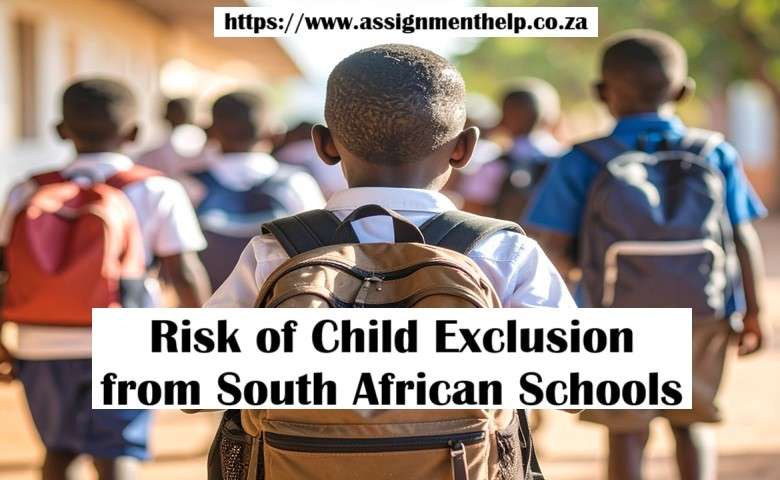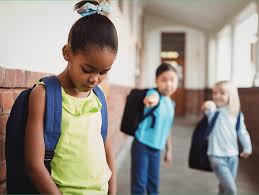
Risk of Child Exclusion in South African Schools
Most children in South Africa remain barred from education because of public schooling issues that put together poverty, disability, and bureaucratic issues. Exclusion through schools combined with marginalization brings about long-lasting consequences that harm children’s lives as well as their self-worth and potential for the future. In his article Pongweni (2025) demonstrates how parents experienced both emotional challenges and logistical hurdles when their children didn’t get school placements for the 2025 school year. The essay uses this one particular article to examine educational exclusion from different angles, using legislative frameworks in conjunction with applicable educational policies and literature on inclusive education.
Defining Exclusion and Marginalisation
Education exclusion is when certain learners have limited or no access to learning opportunities based on social and economic, physical and systemic barriers preventing access to education. That marginalisation creates social fences that inhibit access to services, education among them, for locals of that (marginalised) group. In South Africa the educational exclusion of children with learning disabilities occurs as a result of the intersection of learning disabilities with poverty or lack of documentation.
The process of exclusion does not need to be deliberate because rigid policy frameworks combined with school overcrowding and transportation issues with administration barriers can also prevent inclusive practices. The placement of students is denied when schools lack space or maintain lengthy waitlists leading to violations of their education rights. These definitions offer a framework to analyze the article regarding continuous inequalities and restricted inclusive growth within the nation’s social and education systems (Giri, 2013).
Contextual Analysis of the Article
The research by Pongweni (2025) showcases an acute instance of educational discrimination practices in current South African society. The article outlines the case of parents who properly submitted applications yet discovered their kids were without school placements during the 2025 academic period. The human-interest story captures the psychological pressure, frustration, and desperation felt by families, specifically those who lack the financial capacity to pursue private schooling or seek legal redress. One mother recounts sleepless nights and mounting anxiety as the future of her child hangs in the balance.
This is not an isolated incident. It captures deeper, systemic issues in the Department of Basic Education’s placement procedures. Administrative inefficiency, inadequate school infrastructure, and poor planning have resulted in packed schools and thousands of students going without placement every year. Such children, denied their right to education in practical terms, are being marginalized unnecessarily (Malahlela and Johnson, 2024). The marginalization is particularly harsh for disabled learners, the children from informal settlements, and immigrant children lacking proper documentation. The Pongweni article encapsulates how educational exclusion is not just a policy failure; it is an infringement of children’s basic rights, with lasting implications for their academic and social development.
Policy and Legal Framework
The legal structure and policy framework of South Africa fully backs the right to inclusive and equitable education for all students. According to the Constitution of the Republic of South Africa (1996) every person should receive their fundamental right to basic education. The South African Schools Act (1996) states that public authorities have the duty to guarantee school enrollment for every child based on the constitutional provisions of the Republic of South Africa. According to Pongweni (2025) the real educational conditions in the field differ substantially from what legal intentions intend.
Education White Paper 6 (Department of Education, 2001) implemented an inclusive education policy to tackle learning obstacles while promoting full student involvement regardless of disability status or socioeconomic background. The policy faces challenges in its implementation. The Department of Education Inclusive Education framework (2021) still remains under deep scrutiny of educational institutions clashed with overcrowded classes and shortage of funds and teaching staff.
The approach in the curriculum relies heavily on the resources that are not available in the schools which makes it difficult for the teachers to implement the inclusive education strategy. The gap between established policies and their real-world implementation intensifies the process of social exclusion that needs urgent institutional upgrades. A failure to enhance coordination and planning along with enhanced accountability renders thousands of unplaced pupils devoid of legal protection.
Wider Implications of Educational Exclusion
Educational exclusion leads to important long-term impacts which affect individual students alongside their social community. Learners barred from formal education face greater possibilities of enduring persistent emotional and psychological conditions that create low self-esteem together with anxiety while leading to social withdrawal. The negative impacts from educational exclusion block children from successfully fulfilling their roles within future community and workforce participation. Educational exclusion as a social structure maintains poverty and inequality patterns between groups of people.
With fewer financial resources such as those for education, the poorer groups of children typically opt for education as their primary way out of bad socioeconomic status. School refusal or postponement denies children access to social mobility chances that consequently perpetuate intergenerational social handicaps. Narrows both social cohesion and national development objectives since it sharpens social inequalities by social status in addition to place and disability.
Inclusive education can not only cater to learners with barriers but enhance learning for all. Diverse schools promote empathy, understanding, and cooperation among learners. This enhances social cohesion and leads to a more tolerant and equitable society. According to Malahlela and Johnson (2024), inclusion benefits all learners, not only those labeled as requiring support. Finally, the institutional exclusion of vulnerable learners is evidence of a breakdown in upholding constitutional values and policy commitments. It is important to address this problem in order to provide equal opportunities for all children and to achieve the larger vision of a just and inclusive education system.
Conclusion and Recommendations
The exclusion of students from education as per Pongweni (2025) serves as an essential system fault that has no bearing on the policies of the constitution of South Africa. Weak administrative abilities, when paired with non-inclusive planning modalities, are undermining thousands of children and depriving them of desperately-needed, basic education. The DBE to build better school infrastructure while simplifying enrolment systems Work with teachers to provide inclusive education. Implementation of education policies to enable all children regardless of circumstance the opportunity to learn and thrive and succeed must be governed by equity and accountability.


